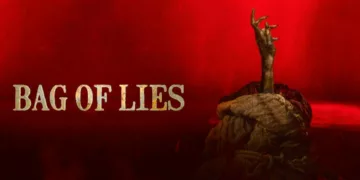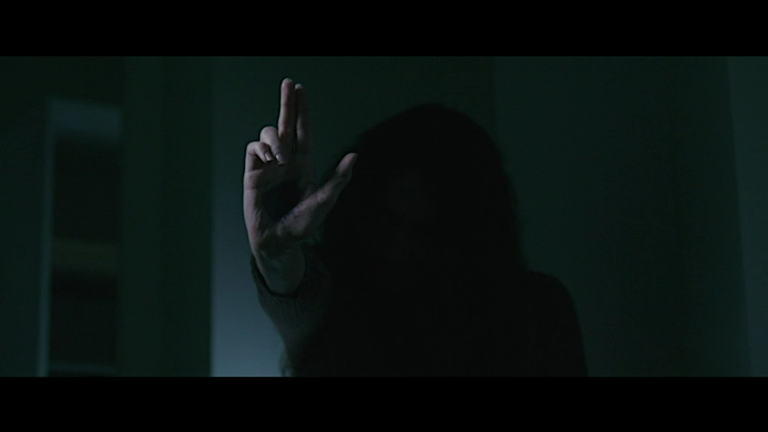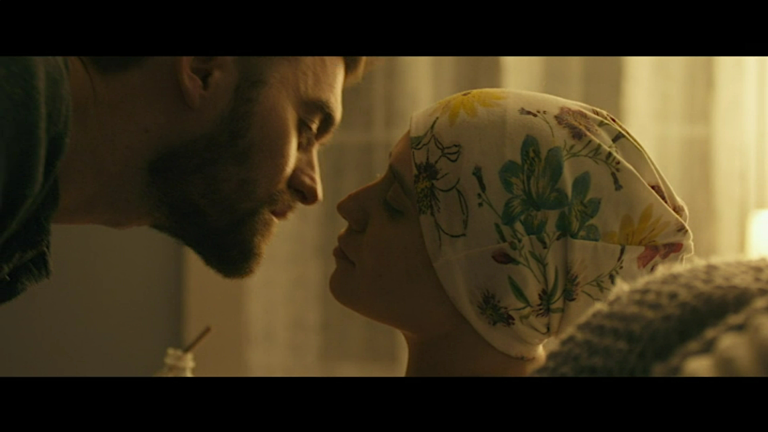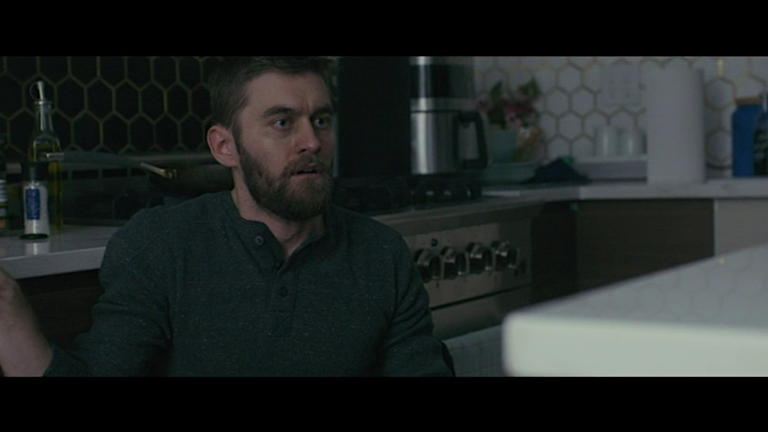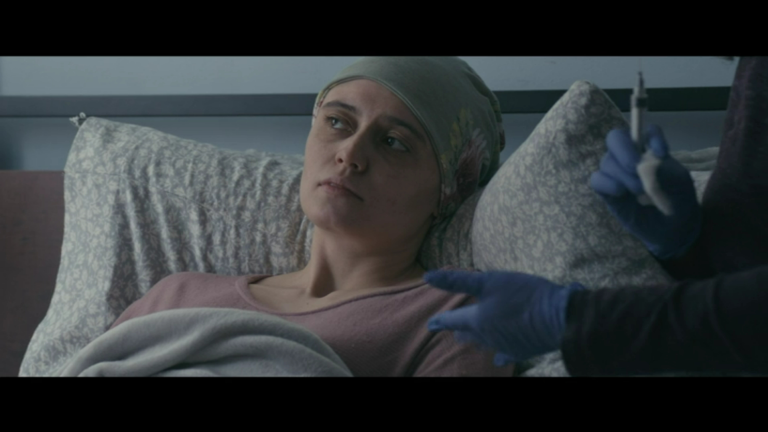The supernatural horror film Bag of Lies directed by David Andrew James, follows Matt and Claire, a couple struggling with a grim prognosis. Claire has been battling cancer while Matt attempts to care for her, his worry and helplessness growing each day.
In a moment of desperation, Matt comes across a potential solution—a mysterious bag said to have healing powers if certain rules are followed. But dark forces are at work, and Matt’s good intentions may lead them both down a dangerous path.
Matt (Patrick Taft) has always done everything in his power to support his wife Claire (Brandi Botkin) through her illness. But nothing has worked so far, and time is running out. When a stranger promises the bag can cure Claire if the ritual rules are obeyed, Matt sees it as their last chance. Little does he know the true cost. As Claire’s health unexpectedly improves, unexplainable events start plaguing Matt. Is the bag really helping as intended? Or will its magic take a far darker turn than anyone could have imagined?
This introduction sets the stage for the couple’s plight and Matt’s fateful choice, which kick off the suspenseful tale. Through it all, the director skillfully explores the limits of what we’ll try for love and how even the best of intentions can go wrong in the realm of mysterious forces beyond our control.
True Love and Consequences
Bag of Lies wastes no time diving into the heart-wrenching situation between Matt and Claire. We come to understand just how dire Claire’s cancer prognosis has become and the toll it’s taken on her overly-devoted husband, Matt. It’s easy to see why he’d grasp at any possibility to ease her suffering.
Claire has decided to face her illness without further treatment, seeking peace in her final days. But Matt is still clinging to hope, unable to accept what’s to come. When a stranger dangles a chance at dark magic healing, Matt acts without thinking—not out of malice but from a place of denial and desperation—to shield Claire from more pain.
His good intentions kick off a chain of troubling events as consequences unfold. Matt grows paranoid and detached as Claire mysteriously improves. But has the cost simply not appeared yet, or is Matt’s fragile mental state unraveling? The film plays with our perception of reality skillfully.
Throughout it all, Patrick Taft and Brandi Botkin give incredibly nuanced performances as their characters maneuver varied emotions. Claire inspires our sympathy through quiet resolve in the face of fear, while Matt elicits understanding of a husband struggling to help his suffering wife by any means.
These compelling characters and their troubled connection increase the tension of wondering how far one might also go in a similar situation. As danger mounts and trust erodes between Matt and Claire, Bag of Lies underscores how even true love can lead down an ominous path when coupled with grief, guilt, and the refusal to accept life’s difficult realities. Their heartbreaking story keeps viewers enthralled to the unpredictable end.
Cursed Objects and Quiet Terror
At the center of Bag of Lies lies an ambiguous “bag” capable of both wonder and wickedness. Found by desperate Matt, it promises healing magic if he obeys mysterious commandments. Place the vessel undisturbed for three days, neither speaking nor seeing what secrets lay within. Simple enough, yet as we know from countless tales, dark pacts come at a cost.
As crimson leaves Claire rejuvenated, cracks form in Matt’s psyche. Eerie occurrences disturb the couple’s home, unexplained and uncanny. Creeping shadows play at the edges of frames, while disembodied voices prattle through walls. Is the bag’s true payment now due, or has stress shattered Matt’s fragile hold on reality?
Details remain scant, fueling unease through uncertainty. Without gratuitous gore or CGI spectacle, director James cultivates anxiety through atmosphere. Sparse lighting and mundane settings become petrifying simply by altering context. Subtle sounds like closing cupboards or feet on stairs take on macabre implications. Even silence has the power to perturb.
Taft translates mounting terror through nuanced gestures—a twitch or fleeting grimace—speaking volumes. His volatile performance anchors escalating suspense. As Matt searches desperately for rationality, we share in ever-deepening dread, left to ponder the bag’s profound curses and our own fallible perceptions. With deft craftsmanship, a simple suggestion becomes profoundly unsettling.
Bag of Lies understands that psychological scares require space for imagination to run wild. Leaving some questions unanswered only intensifies fear of the unknown. Its quiet brand of terror will linger long after the final credits, a reminder that within ordinary lives, true monsters may lurk—or perhaps only within our minds, seeking reasons for all seasons.
Boundless Love, Boundless Loss
At its core, Bag of Lies ponders how far one will go for love. When Claire’s illness proves terminal, Matt’s desperation knows no limits. He bargains with forces beyond understanding, trusting that dark magic can undo reality’s cruelties. But such powers demand payment, and Matt’s devotion may doom them both.
Grief shapes their tragic story—the looming loss that drives Matt to pray at horrors’ door. Yet Claire hopes not for miracles, accepting life’s flowing changes. She seeks only comfort in the final days, not false hopes that prolong suffering. Their differing perspectives reveal love’s complexities, where one wishes to fix and another learns to release.
As cracks form in Matt’s psyche, we question whether darkness dwells within the bag or himself. Is his mind shattered by circumstance, or did he unleash horrors uncaring of consequence? The film offers no definite truth. Instead, it stimulates thought on magic’s relationship with reality and whether we shape our fates or merely glimpse portions understood.
Deeper still, Bag of Lies hints at life’s fleeting nature and the inevitable losses waiting for us all. Though Matt and Claire’s bond proves profound as the wife supports her husband to the story’s grim end, the end finds them regardless. Their poignant story reminds us that despite love’s power to uplift, in this floating world, even it cannot halt time’s currents or change mortality’s laws.
With understated craft, the film offers not answers but avenues for introspection. It probes themes of love, grief, and choice with compassion, and trusting viewers may find personal significance where directors provide commentary alone.
Captivating Performances Guide a Grim Journey
Bag of Lies stands as a testament to acting’s transformative powers. Through Patrick Taft and Brandi Botkin, we experience a personal tragedy that resonates on deeper levels. As Matt Taft walks the knife’s edge between care and crisis, his furrowed features betraying an honest soul cracking under dire pressures. Botkin matches him stroke for stroke as the ailing but resilient Claire.
Their intimate scenes immerse us fully in a marriage battered yet not broken by illness’s cruel twists. Subtle gestures, lingering looks—the smallest details ring with pathos. Even amid supernatural strangeness unfolding, their delicate dynamic stays central. When all seems lost, it’s solely due to concern for each other, not horror props.
Director David Andrew James sustains suspense through Matt’s eyes. Uncertain of what’s real, we share his jagged headspace. Unstable camerawork and erratic edits evoke unraveling minds. Strange sounds almost feel self-generated, torment self-inflicted. This immerses us in Matt’s terror while denying outsider perspectives that could provide release.
Yet smothering viewers so completely in one perspective brings its own tensions. Clarifying timelines would’ve eased a claustrophobic sense of events spiraling beyond understanding. And exploring magic’s nature more might’ve sated curiosity without sacrificing its menace.
Overall, Bag of Lies triumphs as a minimalist character study. Through its stars’ soulful work and James’ unflinching direction down darkness’ lanes less traveled, it taps rich veins of empathy. Even where the script leaves room for more light, performances bring this grim journey to vibrant life.
Interpreting Reality in Bag of Lies
Opposing perspectives emerge from Bag of Lies’ cryptic finale. Has Matt truly succumbed to dark forces’ control? Or did stress simply conjure demons from his mind? No absolute answer arrives, raising interpretive questions.
Perhaps that reflects life’s ambiguity when confronting intense loss. Like Matt, we grasp for solutions through desperate, dangerous paths. Yet hope and courage also rise among the chaos. Just as Claire finds peace accepting fate’s flow rather than damming its tide, some meaning lingers beyond murk.
The film seems less about judging choices than considering consequences. We all struggle to balance caring for others with self-care. At what price, salvation? Whom do we really serve by acting—those we aim to help or those we fear within? Bag hints: while love may drive us to hell, heaven starts by listening with compassion.
Endings often mean new beginnings, and what’s “real” constantly reshapes. So maybe the bag holds what we bring—if fear and selfishness torment, hope and empathy free. Ultimately, its message transcends answers, instead respecting life’s and art’s complexity. Some puzzles remain splendidly unsolved, lest we simplify what’s anything but. In ambiguity, Bag of Lies excavates empathy, not easy truths, delivering haunting prompts for reflection long after the final scenes.
Cultivating Compassion in Bag of Lies
Bag of Lies tells a truly haunting tale through emotional, empathetic lead roles. Patrick Taft and Brandi Botkin imbue complex characters with nuance that lingers, conveying Matt and Claire’s love amid despair with gentleness. Skillful direction injects subtle scares organically between thoughtful drama.
Not all conclusions satisfy, yet this film prizes raising questions over answers. It challenges views of sacrifice, redemption, and what really helps the hurting. Ultimately, Bag of Lies breathes life into themes of listening with compassion instead of reacting out of fear. Even where ambiguity remains, its kindness gives room for individual interpretation and reflection on how we treat each other in life’s darkest valleys.
Genre buffs will find this supernatural story thrilling and thought-provoking. Yet even casual fans of character-driven films may find comfort in the reminder that understanding differs from sympathy, and love means respecting another’s journey. While not for those seeking pulse-pounding shocks, Bag of Lies offers connections to our shared humanity that linger when credits roll. Its gift is provoking discussion about presence, empathy, and care in crisis, making it a story well worth experiencing.
The Review
Bag of Lies
In summary, Bag of Lies succeeds in crafting an emotionally resonant supernatural drama fueled by strong lead performances that elevate its exploration of love and sacrifice amid darkness. Though not perfectly paced and with some ambiguity around its climax, at its heart, the film offers an empathetic portrayal of human struggle that lingers long after by prioritizing compassion over answers.
PROS
- Strong lead performances that bring nuance to complex characters
- A thought-provoking examination of love, loss, and human sacrifice
- Crafts a brooding atmosphere with subtle scares and an unsettling score.
- Promotes discussion of compassion and listening with understanding.
CONS
- Narrative pacing is uneven in parts.
- The climactic revelation lacks some surprise due to foreshadowing.
- Ambiguous endings will not satisfy viewers seeking definitive closure.
